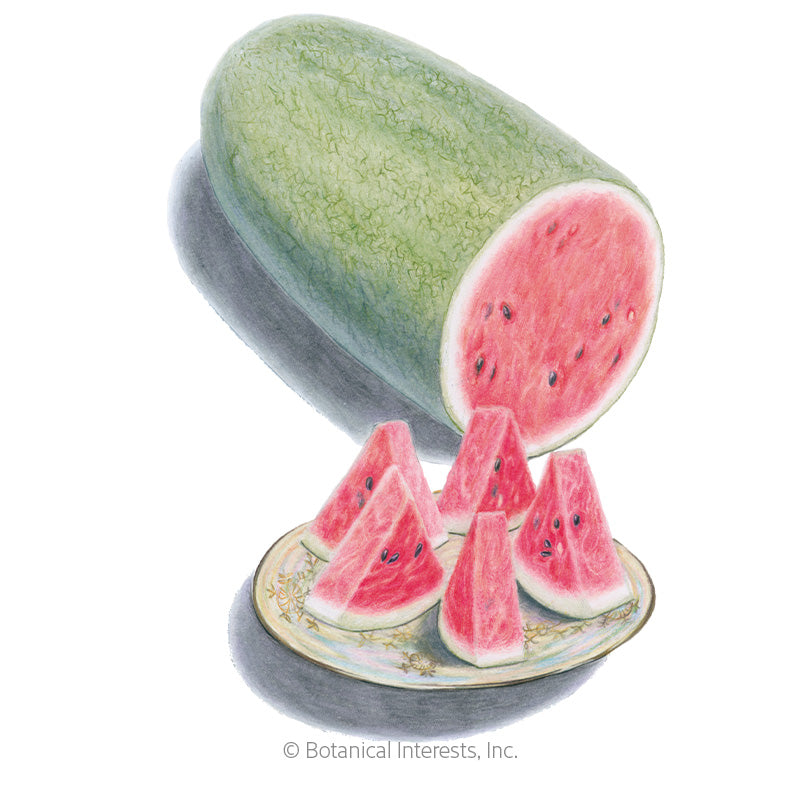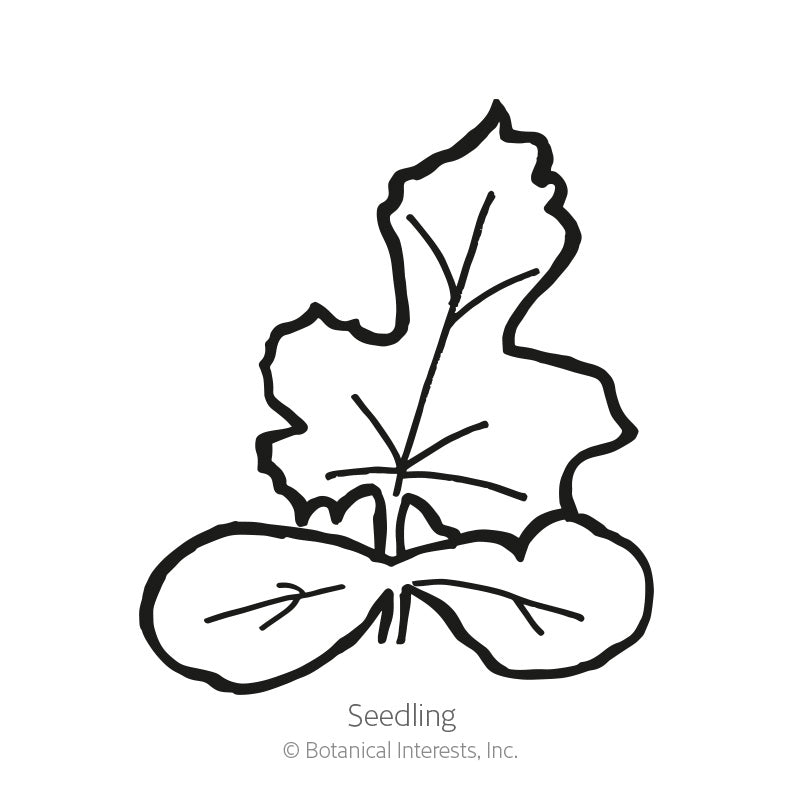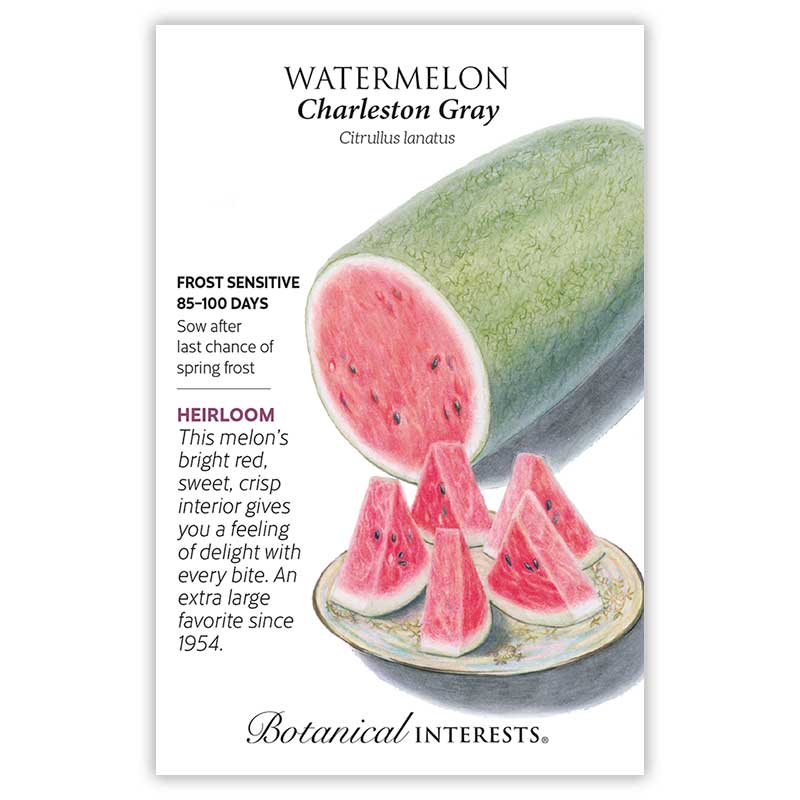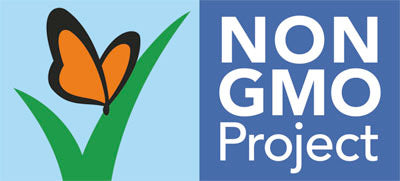


- Variety Info
- Sowing Info
- Growing Info
- Learn More
Variety Info
Days to Maturity: 85–100 days
Family: Cucurbitaceae
Type: Watermelon (Learn more)
Native: Africa
Hardiness: Frost-sensitive annual
Exposure: Full sun
Plant Dimensions: 6'–10' vines
Variety Info: 22"–26" long, 10" wide, oblong fruit that is greenish-gray, and weighs 25–35 pounds. Interior is bright red. 'Charleston Gray' produces 1–2, 20–25 pound fruit per plant with brilliant red, crisp, very sweet interior. Disease resistant to Fusarium wilt and anthracnose.
Attributes: Fusarium Wilt Resistant, Anthracnose Resistant, Frost Sensitive

Sowing Info
When to Sow Outside: RECOMMENDED. 1 to 2 weeks after your average last frost date, and when soil temperature is 70°–90°F.
When to Start Inside: Not recommended except in very short growing seasons, 2 to 4 weeks before transplanting. Roots are sensitive to disturbance; sow in biodegradable pots that can be planted directly into the ground. Transplant when soil temperature is at least 60°F.
Days to Emerge: 5–10 days
Seed Depth: ½"
Seed Spacing: 2–3 seeds per mound
Row Spacing: 4'–6' apart
Thinning: When 3 leaves, thin to 1 plant per mound
Your hardiness zone is
Growing Info
Harvesting: It can be tricky to know exactly when a watermelon is ripe and ready to pick. First, know the number of "days to harvest" and begin checking fruits as harvest date draws closer. Signs to look for are: (1) the bottom of the melon (where it lies on the soil) turns from light green to a yellowish color; (2) the surface color of the fruit turns dull; (3) the skin becomes resistant to penetration by the thumbnail and is rough to the touch; and (4) light green, curly tendril on the stem near the point of attachment of the melon is brown and dry. All of these indicators may not necessarily occur at the same time.




